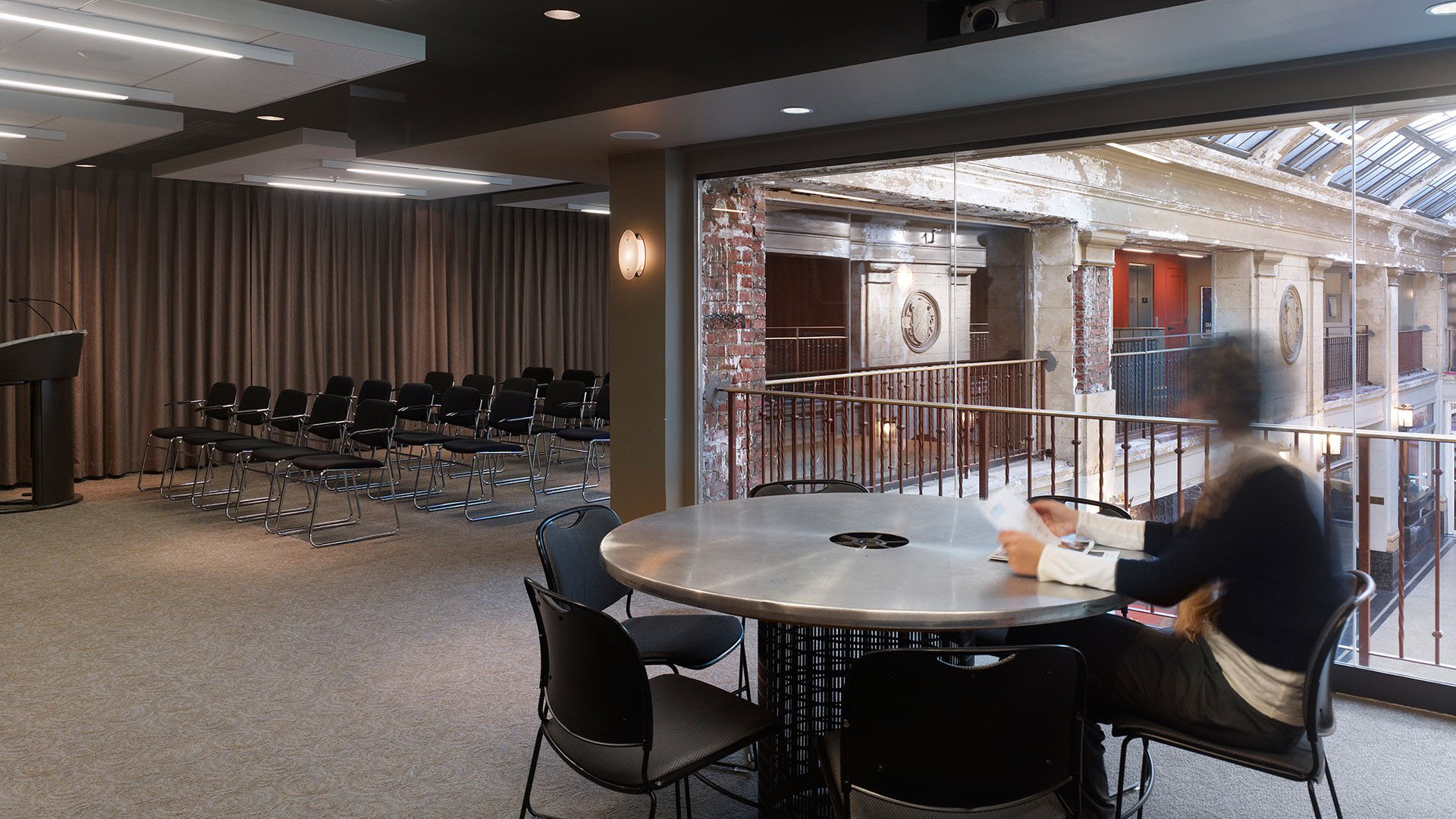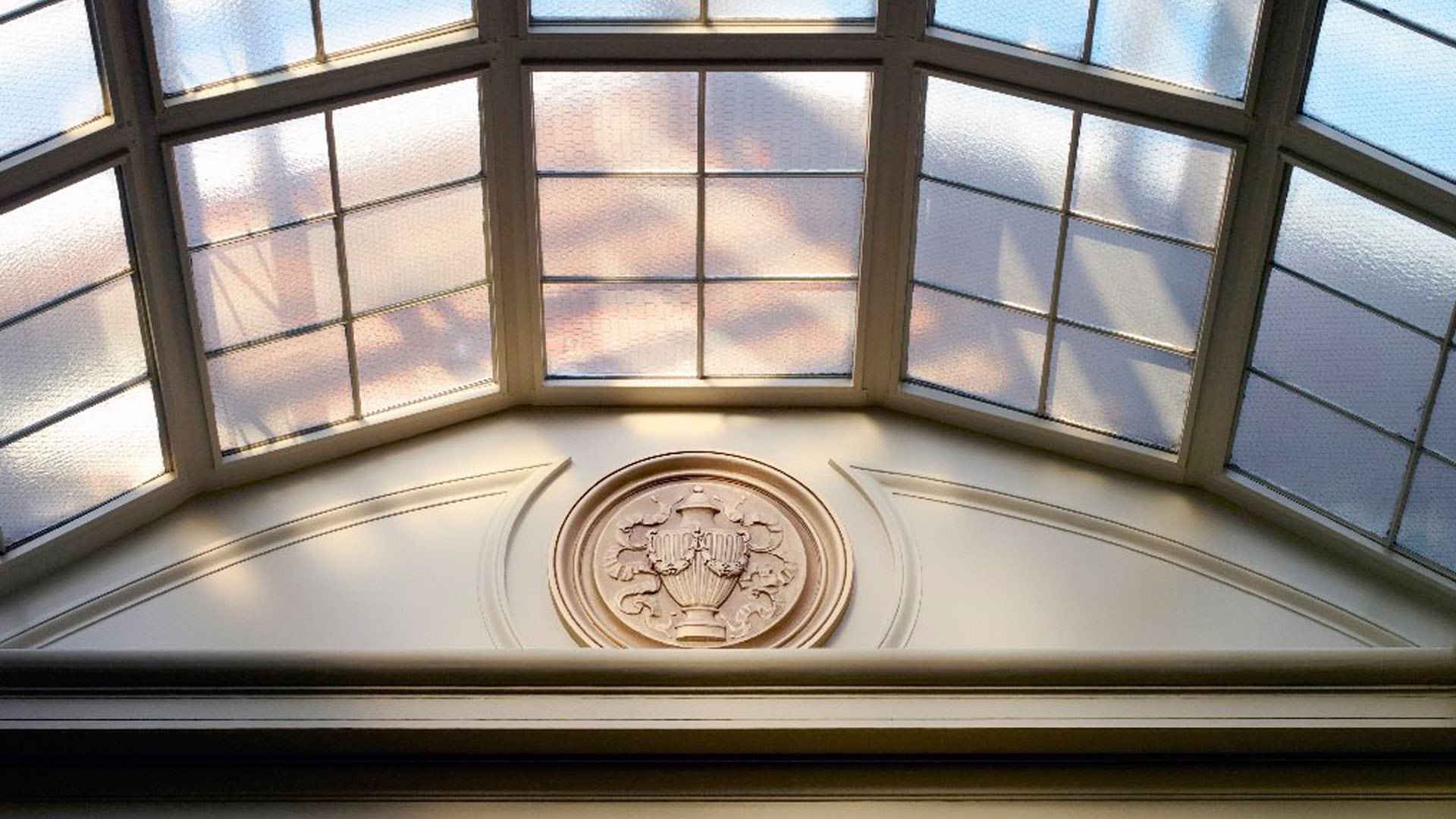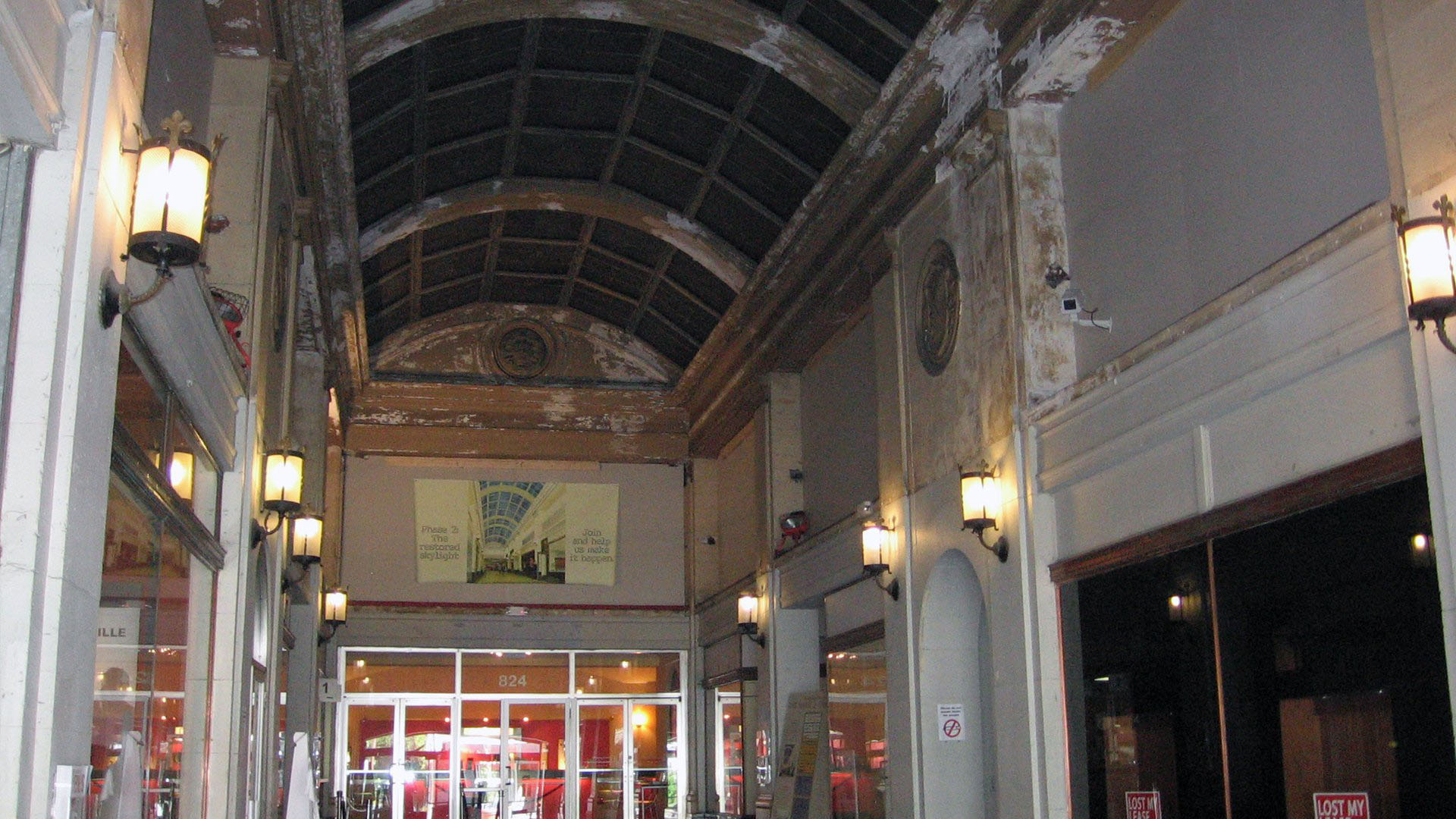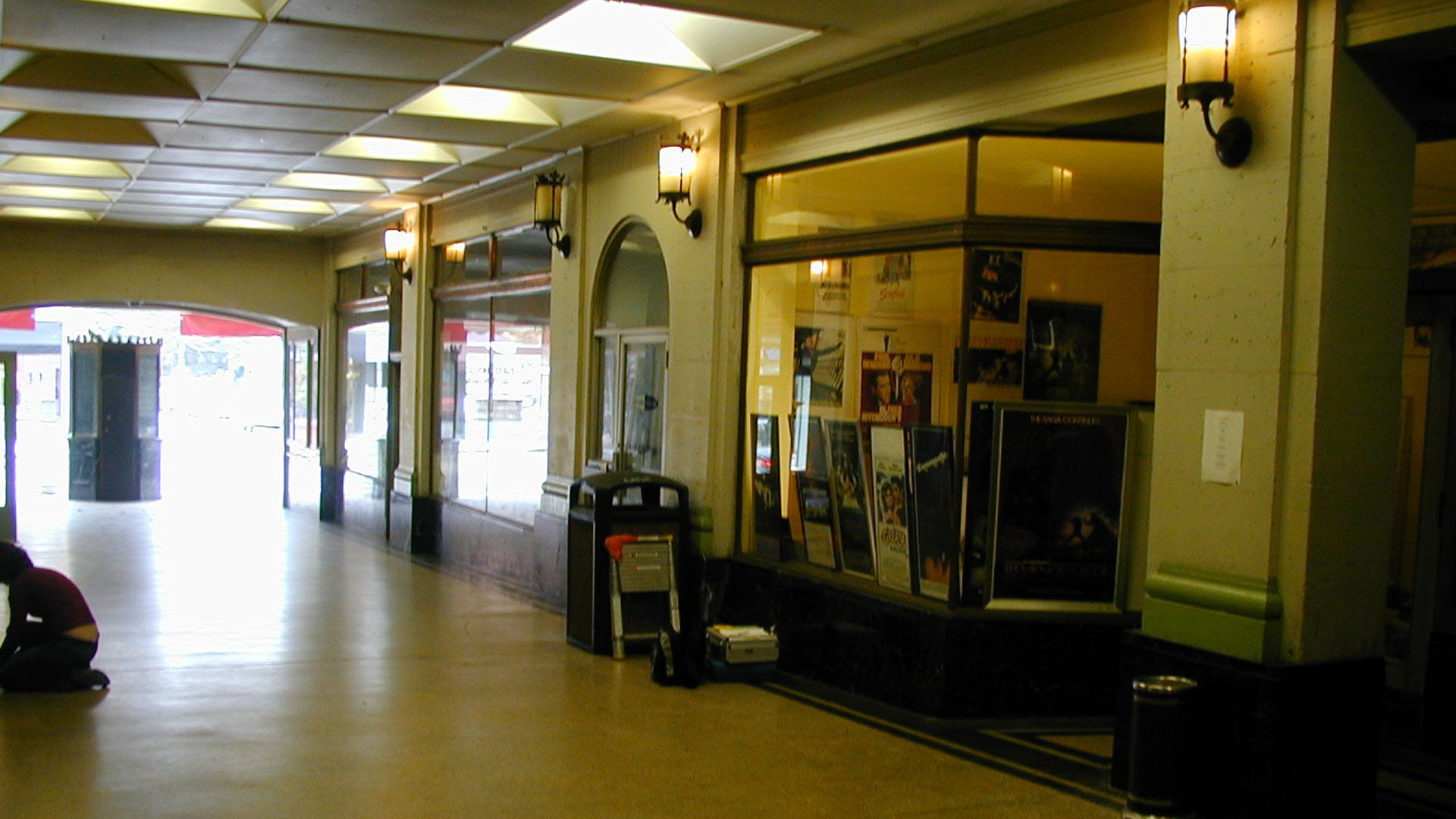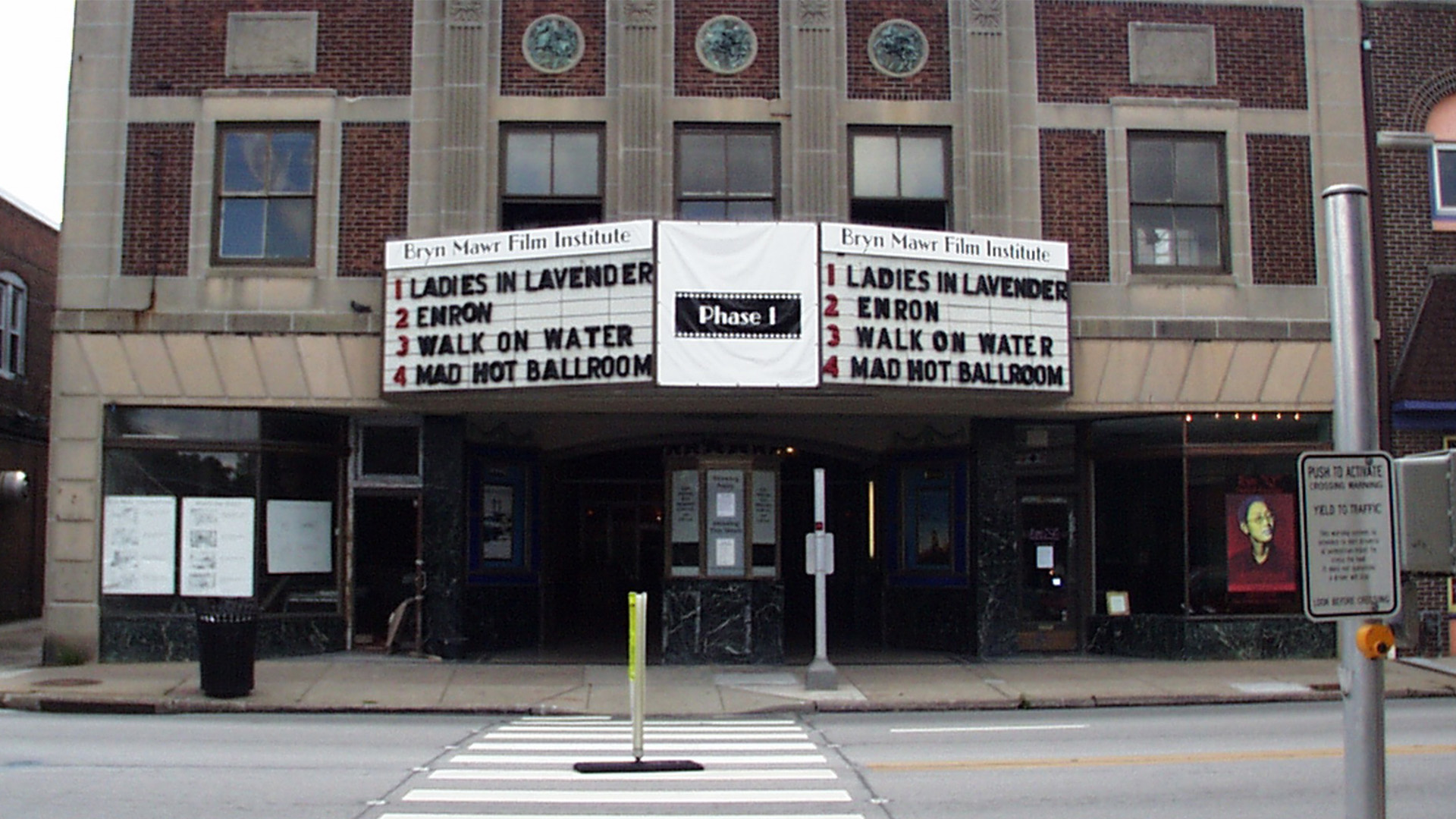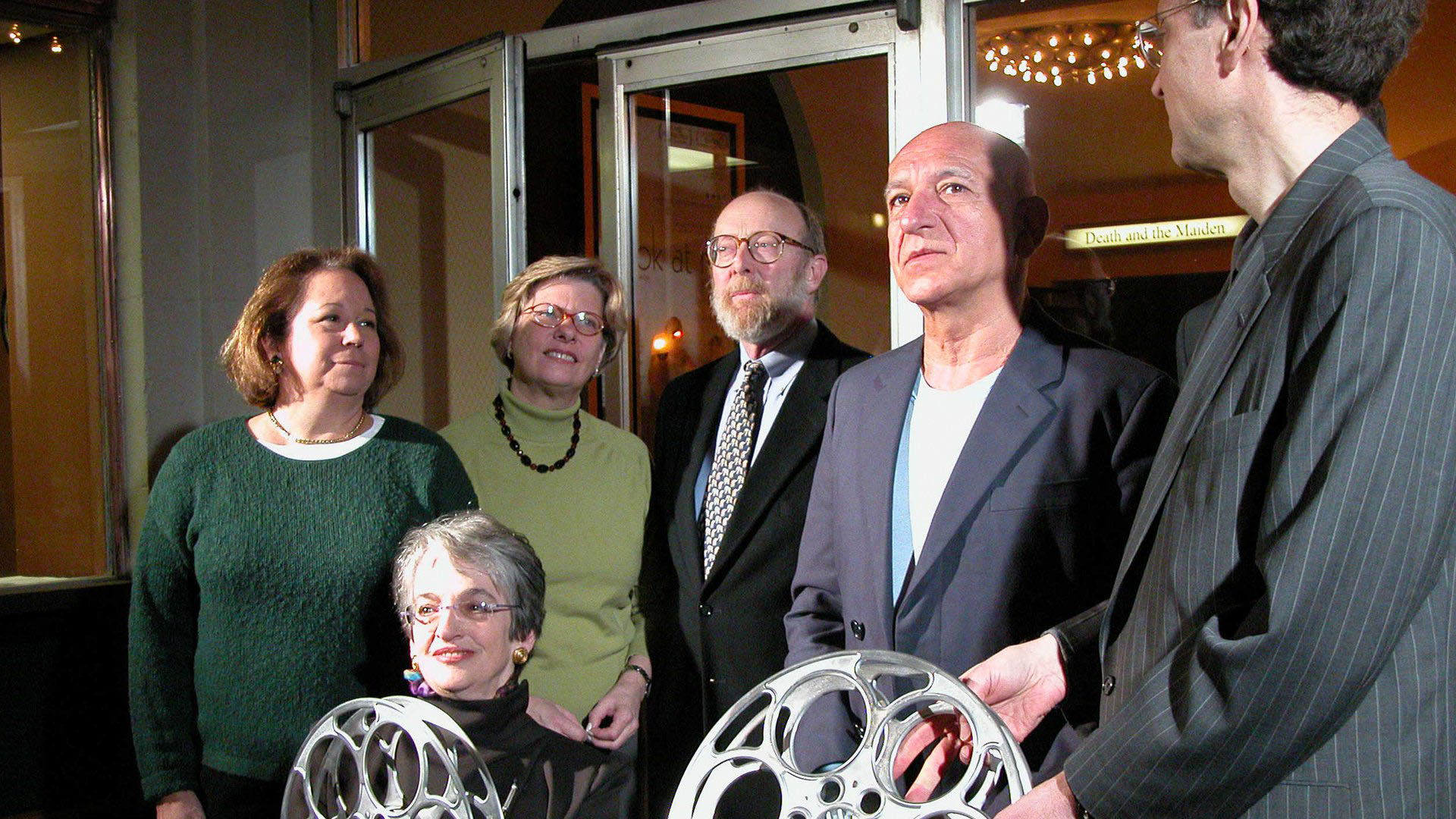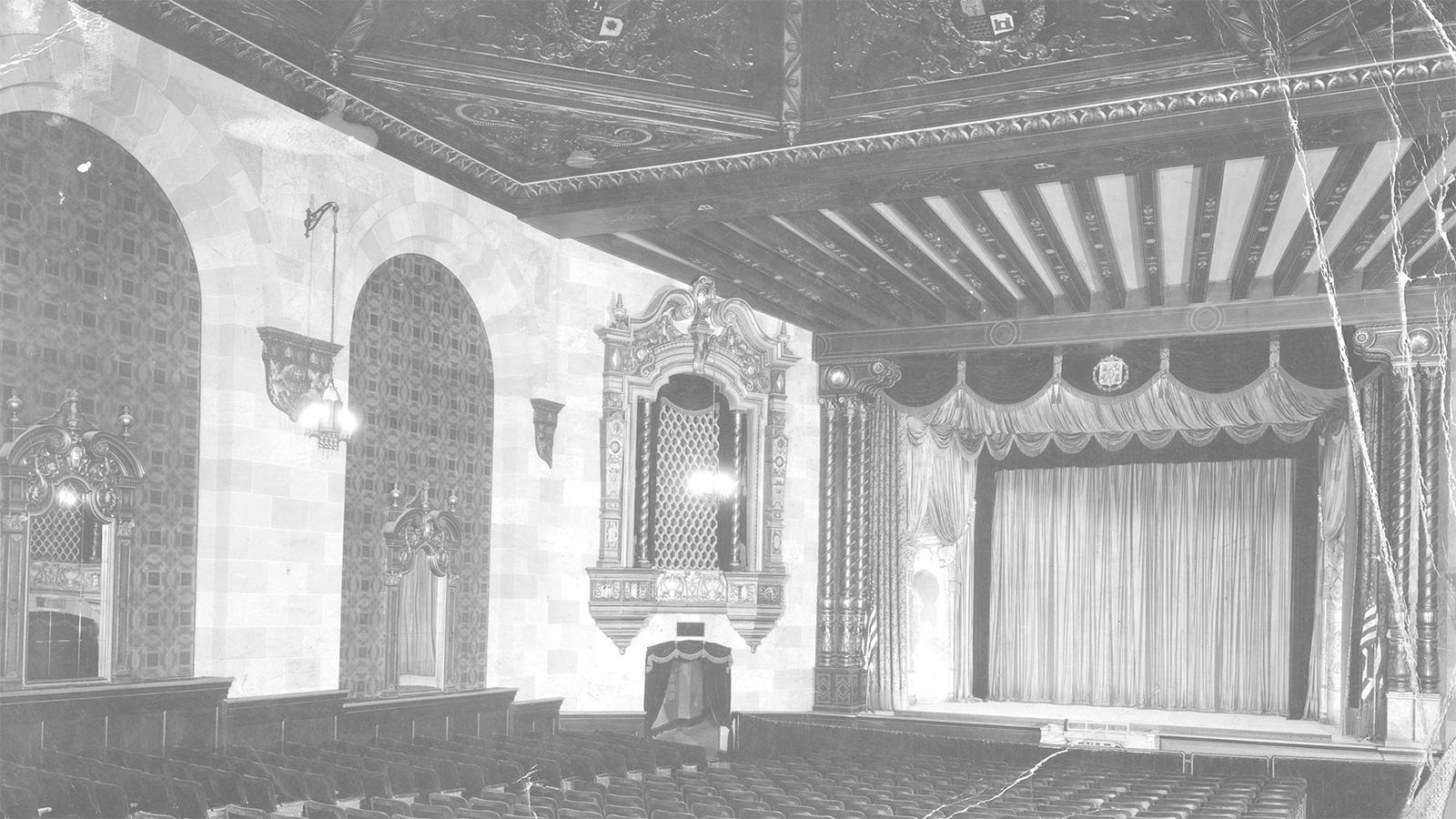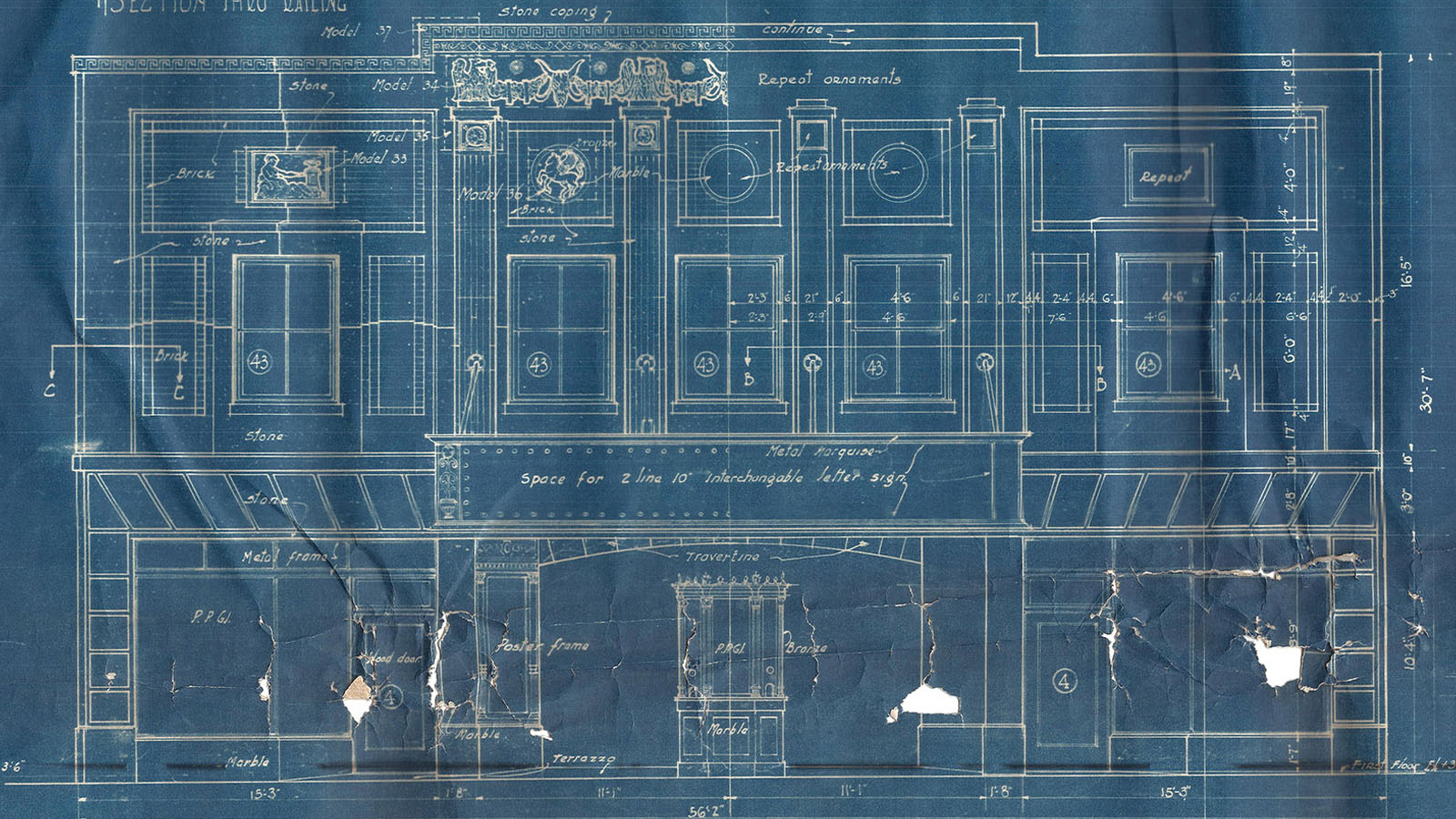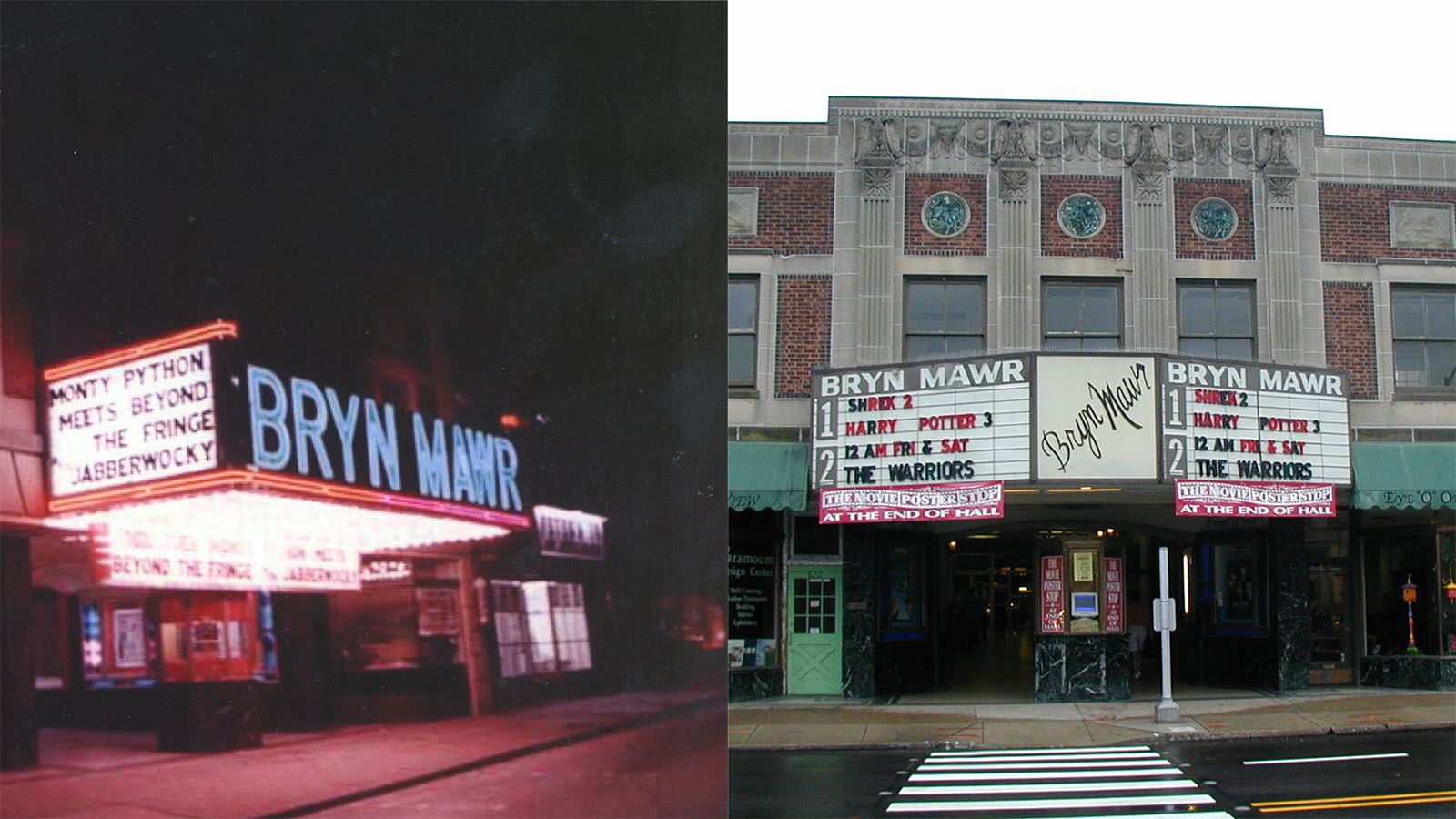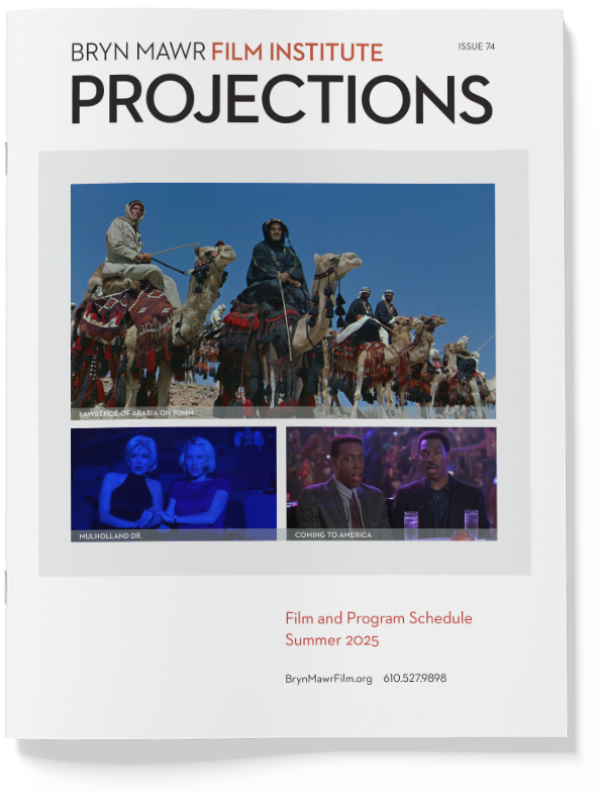This is a complete list of films screened publicly at Bryn Mawr Film Institute in 2011. See the comments for select exclusive programs that are not listed on Letterboxd.
Bryn Mawr Film Institute (BMFI) is housed inside The Seville Theatre, a revitalized 1926 beaux arts cinema at the heart of Philadelphia’s storied Main Line. In the early 2000s, the then-derelict theater was in danger of being converted into a fitness franchise, permanently eliminating what was a lively community hub for over 80 years. Lower Merion resident Juliet Goodfriend (shortly to become BMFI’s founding executive director) gathered like-minded civic and academic leaders to save, restore, and expand Bryn Mawr’s cinema center.
Now, thousands of movie lovers visit BMFI each year to experience contemporary art house features, classic films, independent works, film education, discussions with creators, seminars with experts, presentations from international artists, and much more.
March 12, 2025, marks two decades of BMFI’s stewardship of the nationally recognized historic cinema. We’re taking a look back at the movies, moments, and community that made Bryn Mawr Film Institute what it is today.
Built in 1926, The Seville Theatre, home to Bryn Mawr Film Institute since 2005, has captivated Main Line residents and visitors with cinema experiences since the early years of the medium. It’s difficult to imagine Bryn Mawr without its crown jewel on Lancaster Avenue, the beaux arts landmark designed by prolific Philadelphia architect and Frank Furness protégé William H. Lee, but the preservation and provenance of this historic landmark was never certain. Without the vision of a civic-minded leader, the commitment of a resourceful staff, and the support of a passionate community, Bryn Mawr’s world-class cinema and film education center would not exist.
Successful business owner, Bryn Mawr College alumna, and longtime Main Line resident Juliet Goodfriend witnessed the demise of neighboring Ardmore’s movie theater, which was retrofitted and quickly abandoned by a short-lived fitness chain. Goodfriend’s desire to save her beloved cinema met her serendipitously discovered passion for film studies, and the vision for Bryn Mawr Film Institute was born.
Goodfriend launched the rallying cry and started building a team. A fellow Bryn Mawr resident who shared Goodfriend’s passion for art, architecture, and community, Patricia Wesley, invested her design expertise, becoming BMFI’s founding director of development and communications, laying the groundwork for what you see today.
The “I” in “BMFI” was central to Goodfriend’s vision, so much so that she immediately hired an education director, Andrew J. Douglas, Ph.D., to create an original film studies curriculum—a rare and ambitious investment for a fledgling nonprofit. Douglas crafted an educational blueprint centered around film history, study, and appreciation that would be replicated in cinemas from Boston to Nashville and beyond in the following decades.
By the time “The Bryn Mawr” needed rescuing, John Toner of Renew Theaters had successfully restored, revitalized, and operated two Southeastern Pennsylvania cinemas, The Ambler and The County. Toner’s wisdom and guidance would prove indispensable, as Renew would implement and manage vital operational infrastructures that would catapult BMFI into a completely self-sustaining cinema in only five short years.
Many other essential voices answered Goodfriend’s call to action, including John Cluver of Voith & Mactavish, the lead architect who would restore and expand the derelict theater; former State Representative Connie Williams, who would champion Bryn Mawr’s landmark status for preservation; Alice Bullitt, BMFI’s first programmer who would become an instructor and leading director on the nonprofit’s board; Sam Scott, a community leader who would serve BMFI in various capacities through decades of transformation; and hundreds of others who devoted their time, money, and passion to conserve a communal artform on the verge of extinction.
In December 2004, the nonprofit Bryn Mawr Film Institute purchased the building at 824 West Lancaster Avenue thanks to Juliet Goodfriend’s vision and acumen. What resulted was a community of cultural preservationists who, over the course of two decades, would embrace, support, and elevate the dilapidated gym-to-be into a shining beacon in the art house industry and a beloved gathering place for film lovers of all kinds.
On March 12, 2005, after years of preparation, BMFI’s founder Juliet Goodfriend, joined by Academy Award-winning actor Sir Ben Kingsley, cinema preservationist John Toner, Rep. Connie Williams, and dozens of supporters gathered in a dark, drop-ceilinged hallway to cut the ceremonial film-reel-ribbon, welcoming its early moviegoers into a scruffy lobby space.
The physical state of the theater would be unrecognizable to today’s visitors. Moviegoers entered Lancaster Avenue doors to a darkened tunnel lined with abandoned storefronts. The sticky concessions lobby gave way to shoebox-like auditoriums, packed tightly with hard-backed seats abutting the rear entrances. Movies were perpetually interrupted with the light, sound, and conversations happening inches away from the swinging auditorium doors flanking the cramped popcorn counter.
BMFI’s transformation started immediately in whatever ad hoc spaces were available, from teaching classes in an alcove that would become the not-yet-envisioned elevator lobby, to a small administrative staff working wherever they could find space until the building’s second floor was habitable.
In October 2005, BMFI’s founding director of education, Andrew J. Douglas, Ph.D., introduced two programs that would become signature offerings for the next two decades: BMFI’s flagship film studies course, The Language of Film, and the third-grade visual literacy curriculum, See • Hear • Feel • Film. These would be the first two of hundreds of unique educational opportunities that thousands of film students would come to experience.
Through the tireless advocacy of BMFI’s founding director of development and communications, Patricia Wesley, the Lower Merion Township Historical Commission and Architectural Review Board granted BMFI a Historic Preservation Award in May 2005, which then supported a Keystone Historic Preservation Grant from the Pennsylvania Historical and Museum Commission in the fall of that same year—as well as the theater’s addition to the National Register of Historic Places that December. These awards fueled the restoration of the original 70-foot skylight that crowns the theater’s now-grand atrium—a shocking discovery to Goodfriend and team, as there was no indication such an architectural treasure lay hidden under the flaking dropped ceiling upon purchasing the building. This was the first of many surprises that the restoration would uncover.
In 2005, with movies playing, education starting, renovation commencing, funds accumulating, staff creating, and community supporting, Juliet Goodfriend’s initial vision for Bryn Mawr Film Institute became a reality.
See all of the films shown at BMFI in 2005 on Letterboxd.
In early 2006, BMFI launched the $2.5 million Pane Campaign that commenced the dusty theater building’s much-needed facelift: 400 new glass panes in the recently uncovered skylight; scratch-made office, classroom, and café spaces; a sleeker concessions counter; and the new Connelly elevator which provides access to the second floor for all community members.
The biggest, brightest, most iconic glow-up came in the form of the Hamilton Marquee, a gift from the Dorrance H. Hamilton Charitable Trust, which has been twinkling daily since it was first lit at a community celebration in March 2006. The marquee was historically researched and custom-designed to reflect The Seville Theatre’s original 1926 aesthetic after two previous midcentury iterations.
BMFI’s offerings expanded in its second year. Notable guests included the first of what would be several appearances from Academy Award-winning cinematographer and Steadicam inventor Garrett Brown, an evening with award-winning filmmaker Garry Marshall, and Lassie. Yes, the canine actor who played Lassie guided fans to BMFI for a screening of the latest film in the iconic franchise.
BMFI’s second highest-grossing film of 2006, An Inconvenient Truth, inaugurated the now-customary inclusion of topical experts at documentary screenings to lead discussions on issues outside the film studies world. Inside the film studies world, BMFI welcomed new instructors, including fan-favorites Maurizio Giammarco, Ph.D., and Paul Wright, Ph.D., as well as the late Philadelphia film luminary, Jennifer Steinberg.
State and local governments injected BMFI’s restoration campaign with a $500,000 Anchor Grant in response to the unflinching efforts of founder Juliet Goodfriend and development director Patricia Wesley. BMFI’s eligibility and efforts facilitated state funds to be transferred to Lower Merion Township, who in turn will retain that half-million-dollar seed in perpetuity. BMFI repaid its 2006 grant in October 2021, releasing the funds for the next community anchor in Lower Merion to take root and grow.
See all the films shown at BMFI in 2006 on Letterboxd and peruse the education list.
Though the multimillion-dollar Pane Campaign was less than a year old, contributions from members, supporters, foundations, and civic leadership were already having a visible impact at the top of 2007. In February, the 2nd-floor Multimedia Room opened for business, hosting film studies classes, meetings, events, and See • Hear • Feel • Film sessions for the first time. July saw the first sunbeams shine though the previously tar-papered skylight atop the evolving atrium.
There was big news on the programming front, as well, as BMFI entered the thriving Greater Philadelphia film scene as an enthusiastic partner in the suburbs. Film critic and industry expert Harlan Jacobson brought his Talk Cinema series to BMFI for the first time in 2007, and the Philadelphia Film Festival found ardent moviegoers at their home cinema on the Main Line.
Special guests kept on coming in 2007. Beloved Turner Classic Movies host, the late Robert Osborne, was honored with a Main Line gala, and actor/filmmaker Danny DeVito visited in June for a day of screenings, in-theater Q&As, and hijinks with the young cast of It’s Always Sunny in Philadelphia. Other guests included Oscar nominee Lynn Redgrave, award-winning editor of such films as Murderball and Sicko and such television series as Severance and Tiger King Geoffrey Richman, filmmaker and founder of the BlackStar Film Festival Maori Karmael Holmes, and co-founder of the Philadelphia Folk Festival and longtime WXPN host Gene Shay.
On the education front, a number of film studies courses on such subjects as documentaries, melodramas, blockbusters, Martin Scorsese, and Orson Welles made their debuts, as did one of BMFI’s flagship programs, the Film History Discussion Series (FHDS). Inspired by a collaboration with Bryn Mawr College, FHDS has gone on to be the most frequently taught and highest-attended education offering in BMFI history.
The beginning of the 21st century found theatrical film exhibition at an interesting crossroads. While traditional 35mm films were costly and cumbersome, the infrastructure for reliably transmitting and showing films in digital high definition had not yet materialized. Ira Deutchman, an indie-cinema luminary and valued friend of the institute, had co-founded Emerging Pictures (EP), an innovative film distributor that created a platform to send exhibition-quality digital film files directly to the theater’s projection booth.
What was shown using this pioneering technology? Live performances from stages like La Scala and the Bolshoi, independent documentaries too small for studio deals, and other films that would otherwise never have been shown in theaters found a home at BMFI thanks to its early partnership with EP. If you enjoy Stage on Screen programming today, know that it’s because bold leaders like EP and BMFI had the foresight to get that ball rolling back when Steve Jobs introduced the iPhone.
This reel-free method of digital film distribution wouldn’t become industry standard for another seven years. Innovators like Deutchman would soon guide the independent-theater industry through its biggest upheaval since talkies, and BMFI was ready for the challenge. Founder Juliet Goodfriend’s vision situated BMFI at the front of the line for the future while keeping its feet firmly planted in the cinematic history of its landmark home.
2007 saw more firsts for BMFI, as well. It was the first time BMFI membership reached and then surpassed 6,000 people. This was the first year that BMFI’s programs qualified for funding from the Pennsylvania Council on the Arts, an important hurdle for any arts organization with the hopes of making a deep impact on its community. The first (and only to date) BMFI pie contest was held in conjunction of the hit movie Waitress. BMFI also earned its first “Best of Philly” award from Philadelphia magazine in the category of “The Best Place for Film Buffs.” It’s a title BMFI would do its best to continue to earn in the coming years.
See all the films shown at BMFI in 2007 on Letterboxd and peruse the education list.
As 2008 began, work continued on BMFI’s grand atrium. The replacement of the glass in both the interior tiles and exterior monitor was completed in February, and the final step—restoration of the plaster work—began in November at the hands of European craftsmen. But as is usually the case with historic buildings, as one project ends, the next one is already on the drawing board. That’s why BMFI was extremely fortunate when, in August, then-governor Ed Rendell awarded BMFI a $2.5 million Redevelopment Assistance Capital Project Grant for future renovations to the theater auditoriums. This funding was an essential ingredient in the improvements and expansion that would take place over the coming years, and it would not have come to pass without the assistance of longtime BMFI supporter and former state senator Connie Williams.
BMFI improved its place and expanded its reach within the Philadelphia cinema community in 2008, as well. In February, BMFI was a screening site for Professor Ruth Perlmutter’s new program, “One Film, One Philadelphia,” and director of education Andrew J. Douglas, Ph.D., led a large teacher-training session about that year’s film, Empire of the Sun, for the School District of Philadelphia. In addition, for the first time, BMFI offered a film studies class at a remote location, bringing The Language of Film to the Broad Street headquarters of the Gershman Y.
BMFI opened its doors to new audiences and students in 2008. March saw the start of our Going Gaga screenings, which invited new parents and their infants to one dedicated show a week that featured raised lights, lowered volume, and other accommodations. This program, which would morph into our Sensory Friendly screenings in 2024, was the brainchild of then-programmer, recent board member, and stalwart BMFI supporter Alice Bullitt. 2008 was also the start of BMFI’s long-running Summer Filmmaking Workshop. The program, which started as a collaboration with the Big Picture Alliance and is still taught by its original, wonderful instructor, Christian Fusco, welcomes a dozen high school-aged filmmakers for six weeks of learning, collaboration, and fun resulting in a short film of their own creation.
2008 also saw new additions in the education realm. BMFI welcomed the George Rehrauer Collection of film books, donated by The Haverford School, which became the basis for the BMFI library from which members are able to borrow a wide range of cinema-focused works. A number of film studies offerings were new in 2008, including courses on Woody Allen, the French New Wave, screwball comedies, the Coen brothers, and, in the start of an annual summer tradition, Alfred Hitchcock.
Two major BMFI events in 2008 led the year’s cavalcade of special guests from across the cinema spectrum. Sir Ben Kingsley, who cut the ribbon at BMFI’s 2005 opening, returned to headline the Casino Royale Silver Screen Gala in March, which was emceed by Philadelphia broadcasting legend and friend of BMFI, Dave Roberts. In the fall, the whole theater building came alive with sports experts and fans during An Evening with Steve Sabol and NFL Films, honoring the man and organization that set the bar for the cinematography of professional athletics. In attendance for these festivities was an all-star team of Philadelphia sports personalities, including Merrill Reese, Ray Didinger, and Glen Macnow.
But all those folks were just the tip of the iceberg (albeit, an impressive one) when it comes to the notable people who visited BMFI in 2008. A number of documentarians brought their movies to our theater that year, including Oscar nominee Nanette Burstein (American Teen), Guido Santi and Tina Mascara (Chris & Don: A Love Story), and Jamie Moffett (Ordinary Radicals). Screenwriter/director Mark Herman brought his film The Boy in the Striped Pyjamas and was joined by the author of the source novel, John Boyne. Also, a young English-American actress, Hayley Atwell, appeared at BMFI with what was her third film, Brideshead Revisited.
And just as few in attendance on that warm summer night could have foreseen the big-screen heights—such as the Marvel Cinematic Universe and the Mission: Impossible series—to which Ms. Atwell would rise, it would have been comparably difficult to predict what lay ahead for BMFI . . .
See all the films shown at BMFI in 2008 on Letterboxd and peruse the education list.
Since purchasing the derelict theater building in 2005, the main atrium entrance had been draped in tar paper, perforated by broken skylights, and caged in scaffolding. Restoring this wing of the historic building required both structural and artistic expertise, uniting a team of architects, sculptors, painters, plasterers, artisans, and electricians from Pennsylvania, New York, Chicago, and Bulgaria.
In February 2009, the years-long effort to fully restore the grand atrium was complete thanks to individual and institutional donors who were inspired by BMFI’s leadership and fundraising efforts. You can still see the names of BMFI’s fiercest restoration supporters on the brass stars under the Hamilton Marquee. The Preservation Alliance of Greater Philadelphia awarded BMFI and its wonderful architects, Daniela Holt Voith and John H. Cluver of Voith & Mactavish Architects, a Grand Jury Award for the restoration in June of that year.
Now that BMFI’s facilities were fully functional and free of scaffolding, building supplies, and construction noise—for the moment—it was time to have more special events, grow our education programs, and welcome lots of guests, all of which we did in 2009.
BMFI had its first Oscar party in February, where attendees were invited to dress up and join us for food, drink, and the awards show telecast on the big screen, augmented by insights and commentary from our programmer, Valerie Temple, and director of education, Andrew Douglas. Later that month, we tried another new program, an at-home gala, which, if we’re being honest, wasn’t very popular. But it did have a wonderful in-theater component with longtime Inquirer film critic and friend of BMFI Carrie Rickey interviewing film historian Mark Harris about his then-new book,Pictures at a Revolution: Five Movies and the Birth of the New Hollywood. The final major event of 2009 was Fashion in Motion in May. This day-long affair at BMFI included a screening of Breakfast at Tiffany’s, a fashion show, and presentations by award-winning costume designer Mark Burchard and fashion curator and author Kristina Haugland of the Philadelphia Museum of Art.
BMFI education had its moment in the spotlight, as well. Our third-grade visual literacy program, See · Hear · Feel · Film, set a participation record with 1500 students from schools across the region. Film Studies tried out a new format in 2009, presenting its first daylong seminar, on master directors Bernardo Bertolucci, Elia Kazan, Akira Kurosawa, and Preston Sturges in September. There were also two special sessions of The Language of Film: one for the leadership and students of the Violette De Mazia Foundation, and another that allowed teachers to earn credit through a partnership with the University of the Arts.
A number of courses were offered for the first time that year, as well, including Signs of Life: New German Cinema; Look to the Skies: Superhero Cinema; Kieslowski’s Three Colors: Blue, White, Red; Icon in the Director’s Chair: Clint Eastwood; Fire Down Below: Latin American Cinema; Hitchcock at the Height; Moguls, Mensches, and Nudniks: Jews and American Cinema (at the Gershman Y); and Revolutionary Dreamer: Bernardo Bertolucci. New programmatic ground was covered in other ways, too. Our first simulcast of National Theatre Live featured Phèdre,starring Helen Mirren, in July.
While we all had to be content to see Ms. Mirren live on our screen—not in person—plenty of notable people visited BMFI in the flesh. Many talented folks from across the Philadelphia region came to the theater in 2009. We welcomed Jim Ellis, the swim coach who started the first African American swim team in the country in Philadelphia, and who was the subject of the 2005 movie, Pride. Longtime BMFI supporter and founder of The Vanguard Group, John C. “Jack” Bogle led a discussion of one of his favorite movies, Executive Suite. The Kulu Mele African American Dance & Drum Ensemble performed before and after a screening of a short documentary about their trip to Guinea. Philadelphia culinary instructor and subject of the documentary Pressure Cooker, Wilma Stephenson, came to BMFI with her movie. Various medical professionals shared their expertise at BMFI as they discussed health-related issues depicted in the movies of the “What’s Up Doc?” film series. And director Jeremiah Zagar brought his documentary, In a Dream, to BMFI, along with its subject (and his father), renowned Philadelphia mosaic artist Isaiah Zagar.
More filmmakers, from outside the region, visited BMFI in 2009, as well. R.W. Goodwin, best known as an executive producer and director of The X-Files, brought his low-budget sci-fi send-up, Alien Trespass, and award-winning filmmaker Aviva Kempner visited with her documentary Yoo-Hoo, Mrs. Goldberg. Filmmakers Tony Zierra and Elizabeth Yoffe, and subject, actor Chad Lindbergh, brought their documentary My Big Break to BMFI, and co-director Jenny King showed her documentary The Dhamma Brothers, about a prison meditation program in Alabama.
With all these special events, education offerings, and filmmaker appearances, we had a lot going on in 2009, and a lot to communicate to our community. That’s why, in December, we published the first issue of our completely redesigned program guide, Projections, a much-needed upgrade in light of all the growth that had occurred over the previous four-plus years. Little did we know we’d have even more—about twice as much, actually—to share with our patrons before too long . . .
See all the films shown at BMFI in 2009 on Letterboxd and peruse the education list.
As 2010 dawned, barely a year had passed since the finishing touches were put on the atrium restoration, the last piece of the five-year project to make the entire building safe, functional, and welcoming for BMFI patrons. Now that the original structure was in good shape, it was, of course, time to build an addition that would add another screen.
Why expand Bryn Mawr Film Institute beyond the original building footprint that had served moviegoers so well for nearly 85 years? For the same reason the once-grand auditorium of the Seville Theater was split in two in the 1970s: changes in the film industry. As movie studios, audiences, and the exhibition business changed over the years, it became advantageous and then necessary for a theater to be able to show more than one movie simultaneously, to appeal to more diverse audiences and maintain secure financial footing.
As more people in our community became aware of BMFI, they began to think of us as their local theater, and some even became habitual moviegoers, which was so gratifying. But it also created some challenges when “the industry” would require us to keep some movies for 10 weeks or more. Though this meant the movies were doing well, it also meant that BMFI might have one of its two screens occupied by the same movie from Thanksgiving until the Academy Awards. Our members and patrons were understandably frustrated by that.
Add to that finding the “screen space” for BMFI’s growing special programming slate and education offerings. Since BMFI’s opening, the main attractions have always been augmented by an assortment of house-curated screenings and events, along with a variety of film classes. As BMFI matured, the quality, number, and demand for those options only grew, but space was limited by our contractual obligations to the distributors that provided the new movies. Adding a new screen would give those programs room to grow, too.
That’s why, in February, we launched the Theater Three Challenge campaign to raise $5.5 million to expand BMFI. By August, BMFI had raised over $3 million of that amount thanks to the generosity of patrons, members, donors, the Board of Directors, and local foundations. We’d get even closer to the finish line in October when BMFI received one of the largest single gifts in its history: a $500,000 challenge grant from the Otto Haas Charitable Trust. That month also saw the start of the Take-a-Seat campaign, which allowed donors to “claim” a seat in honor of a special occasion or loved one in the new theater to be built.
And that additional theater couldn’t be built quickly enough for all of the new special programming, education initiatives, and partnerships BMFI began in 2010. One such collaboration was with SpectiCast, a company founded in Philadelphia in 2009 that quickly became a trailblazer in the event cinema industry by distributing cultural and alternative content—such as operas, ballets, and concerts—to theaters around the world. Among its most impactful partnerships was its work with BMFI, which brought performances by the Philadelphia Orchestra to local cinemas, making world-class arts programming accessible to broader audiences.
Another long-term collaboration—that has lasted through five movies over 15 years and counting—began that year, as well, when Philadelphia-based filmmaking team Don Argott and Sheena Joyce brought their movie The Art of the Steal to BMFI for several screenings. The documentary, about the controversial efforts to move the Barnes Foundation from its original site (in Merion, PA) to the Benjamin Franklin Parkway in Philadelphia, inspired a wide-ranging series of post-screening discussions on topics central to the film and featuring numerous local experts such as state senator and philanthropist Constance Williams, noted architect Denise Scott Brown, and the filmmakers themselves.
Many documentarians brought their movies to BMFI in 2010. Cindy Burstein and Tony Heriza, along with Director of Philadelphia’s Mural Arts Program Jane Golden, visited BMFI with their award-winning documentary about a unique restorative-justice project, Concrete, Steel and Paint. Japanese filmmaker Megumi Sasaki brought her documentary Herb & Dorothy, about a New York couple of modest means who managed to build one of the most impressive private collections of modern art in America. Acclaimed pianist and University of the Arts professor Annette DiMedio visited BMFI to discuss They Came to Play, a documentary about piano competition in which she is featured. And one-time Colombian presidential candidate Ingrid Betancourt, who was held captive for six years after a politically motivated abduction, visited BMFI to discuss the documentary about her ordeal, The Kidnapping of Ingrid Betancourt.
Noted artists and scholars made their way to BMFI in 2010, as well. Renowned multimedia artist Red Grooms screened and discussed some of his works, and contemporary artist Daniel Heyman, a Pew and Guggenheim Fellow, visited BMFI to discuss Persepolis, screened in conjunction with the One Book, One Philadelphia program. Enrique Sacerio-Garí, professor of Hispanic and Hispanic American Studies at Bryn Mawr College, guided an audience through a Cuban film showcase, while musicologist Kendra Preston Leonard shed some light on the use of music in three screen adaptations of Shakespeare’s work.
While we were thrilled to have so many talented academics stop by, it must be said that BMFI’s own faculty really outdid themselves in 2010. In addition to a number of returning favorites, a diverse slate of new classes was on offer, including Ecstatic Truth: The Films of Werner Herzog, Ascending from Darkness: The Films of Stanley Kubrick, Marriage, Motherhood, and Madness: The Hollywood Melodrama, Labyrinth of Passion: Spanish Cinema, The Color of Paradise: Arab and Islamic Film, [Expletive Deleted]: David Mamet Films, Alfred Hitchcock: The Political Films, Pantomimes and Proverbs: The Films of Tati and Rohmer, Bold and Bawdy: The Films of Almodóvar, Adapting Jane: Austen on Screen, and Beyond Objectivity: The Contemporary Documentary.
2010 also saw the creation and first iterations of what has become the most popular offering in our Film Studies program: Cinema Classics Seminars. The summer featured one-night learning opportunities covering On the Waterfront, The Third Man, The Hidden Fortress, and The Lady Eve, with Fritz Lang’s Metropolis added in the fall for good measure.
It was educational opportunities like these, and the wide range of special programs outlined earlier, that allowed BMFI to earn a hat trick of regional kudos by being named “Best Movie Theater” by Philadelphia Magazine, ditto from Main Line Suburban Life and Main Line Times, and “Best Place to Catch a Foreign Flick” by Main Line Today.
BMFI’s upgrades weren’t limited to the historic building in 2010. BrynMawrFilm.org underwent a major overhaul, resulting in a stylish new website that, most importantly, enabled moviegoers to purchase tickets online for the first time. This digital leap into 21st-century technology was not a moment too soon, as online ticket sales also meant shorter lines at the box office, perfect for when BMFI finished building its additional theater. Or would it be two . . .
See all the films shown at BMFI in 2010 on Letterboxd.
Pre-production was in full swing crafting the biggest transformation at 824 W. Lancaster Avenue since The Seville’s doors opened in 1926: a third auditorium would expand the theater’s footprint and capacity from two screens to three. The $5.5 million Theater Three Challenge was nearly realized with support from the Otto Haas Charitable Trust, a dedicated board, and patrons eager for more movies in Bryn Mawr. Of course, an addition to the theater building required adjacent land. Bryn Mawr Hospital, lifelong neighbors and pillars of the community, generously agreed to a land swap agreement, making lofty dreams of more movies and moviegoers a reality with the necessary space to build.
But wait, there’s a twist. With fundraising goals in sight, founder and president Juliet Goodfriend, with the support of Board Chair Sam Scott, took another look at the numbers. What if BMFI had four screens instead of three? The potential for even more events, movies, and programs would increase enormously with another auditorium. Never one to let success spoil a good idea, Goodfriend rallied the community to break ground on two—not one—state-of-the-art theaters. Architect John Cluver and his team at Voith & Mactavish drafted plans for a reimagined cinema that married historic glamour with modern moviegoing. The results, they predicted, would be epic.
Meanwhile, 2011 delivered daily movies, events, filmmaker visits, and classes, with possibly the most diverse slate of special guests we’d welcomed up to that point. They included a writer The New York Times called “a modern-day Dorothy Parker,” a film preservationist with a collection at the Academy Film Archive, and the first American to complete a solo trek across Antarctica.
The year got off to a great start when, in January, Oscar-nominated animator Paul Fierlinger and his filmmaking partner and wife, Sandra Fierlinger, taught a master class and introduced and discussed their film My Dog Tulip. Many more filmmakers followed, including Temple University professor LeAnn Erickson with Top Secret ‘Rosies’: The Female ‘Computers’ of WW II; Jamie Moffett with his documentary, Return to El Salvador, about the aftermath of its 12-year civil war; Philadelphia’s own Tigre Hill with his film about the murder of police officer Daniel Faulkner, The Barrel of a Gun; documentarian Taggart Siegel with Queen of the Sun: What Are the Bees Telling Us? about colony collapse disorder; and journalist, filmmaker, and adventurer Jon Bowermaster—a six-time grantee of the National Geographic Expeditions Council—with three segments from his series of documentary shorts, Oceans 8.
BMFI also benefited from special appearances by a number of wonderful folks from our own backyard. Viking Cooking School hosted a pastry reception in connection with the documentary Kings of Pastry, Lower Merion Conservancy put on a panel after a screening of Gasland, and Inglis House introduced a screening of the art-and-disability documentary Shooting Beauty. Dr. Henry Mayer of Bryn Mawr Hospital introduced Sideways and discussed the health benefits of wine, and BMC professor Bethany Schneider discussed the Native American film Smoke Signals.
In addition, the noted radio personality and founder of the Philadelphia Folk Music Festival, Gene Shay, returned to BMFI to introduce a screening of Phil Ochs: There but for Fortune, a documentary about the controversial folksinger, co-sponsored by the Philadelphia Folksong Society. Adventurer and La Colombe founder Todd Carmichael came to BMFI with the documentary about his journey across Antarctica, Race to the Bottom of the Earth. And even though she’s from New York, famed writer Fran Lebowitz felt right at home during her Q&A after a screening of the Martin Scorsese-directed movie about her, Public Speaking.
BMFI also brought three luminaries from different fields to the theater for very special events. First came beloved Inquirer film critic—and longtime friend of BMFI—Carrie Rickey, who returned to guide us through an evening dedicated to Elizabeth Taylor. Then, just in time for the playoffs, chairman and part-owner of the Philadelphia Phillies, Bill Giles, visited BMFI for a dinner filled with baseball talk followed by a screening of The Natural. Finally, famed film preservationist Robert A. Harris visited BMFI to discuss his work restoring such landmark motion pictures as Lawrence of Arabia, Spartacus, and Vertigo so current and future generations of moviegoers would be able to see them as their creators intended.
And though they may not be in the same class as Carrie Rickey or Robert Harris, BMFI’s faculty continued to increase our community’s knowledge and appreciation of film in 2011, as well. In addition to the return of several favorites, there were new courses in the Film Studies curriculum, including Eric Rohmer: Tales for All Seasons, Dogged Defiance: Sidney Lumet, Art of the Screenplay, World War II Comedy, Arthur Penn: Chronicling the Outsiders, Alfred Hitchcock: The Best of the Rest, Stranger than Paradise: The Films of Jim Jarmusch, and Michelangelo Antonioni: Landscapes of the Soul.
In our second year of offering one-session seminars, Some Like It Hot, Modern Times, Jaws, Imitation of Life, and Taxi Driver earned spots on the syllabus, and there were day-long explorations of the cinema of the 1960s and silent cinema, as well. BMFI began to venture a bit outside the realm of media studies with Philosophy on Film, which was organized by LaSalle philosophy professor Marc Moreau, Ph.D., and featured scholars from the Greater Philadelphia Philosophy Consortium analyzing movies through that theoretical prism.
By the end of 2011, the four-screen dreams were inching closer to a groundbreaking reality. It was only ten years earlier that Juliet Goodfriend had her first glimmer of an idea to rescue Bryn Mawr’s dilapidated movie house. With construction about to begin that would transform the Main Line’s arts and culture community, an anonymous donor contributed a $250,000 matching gift to add a name, so aptly, above the doors that welcomed guests to BMFI every day: “Juliet J. Goodfriend.”
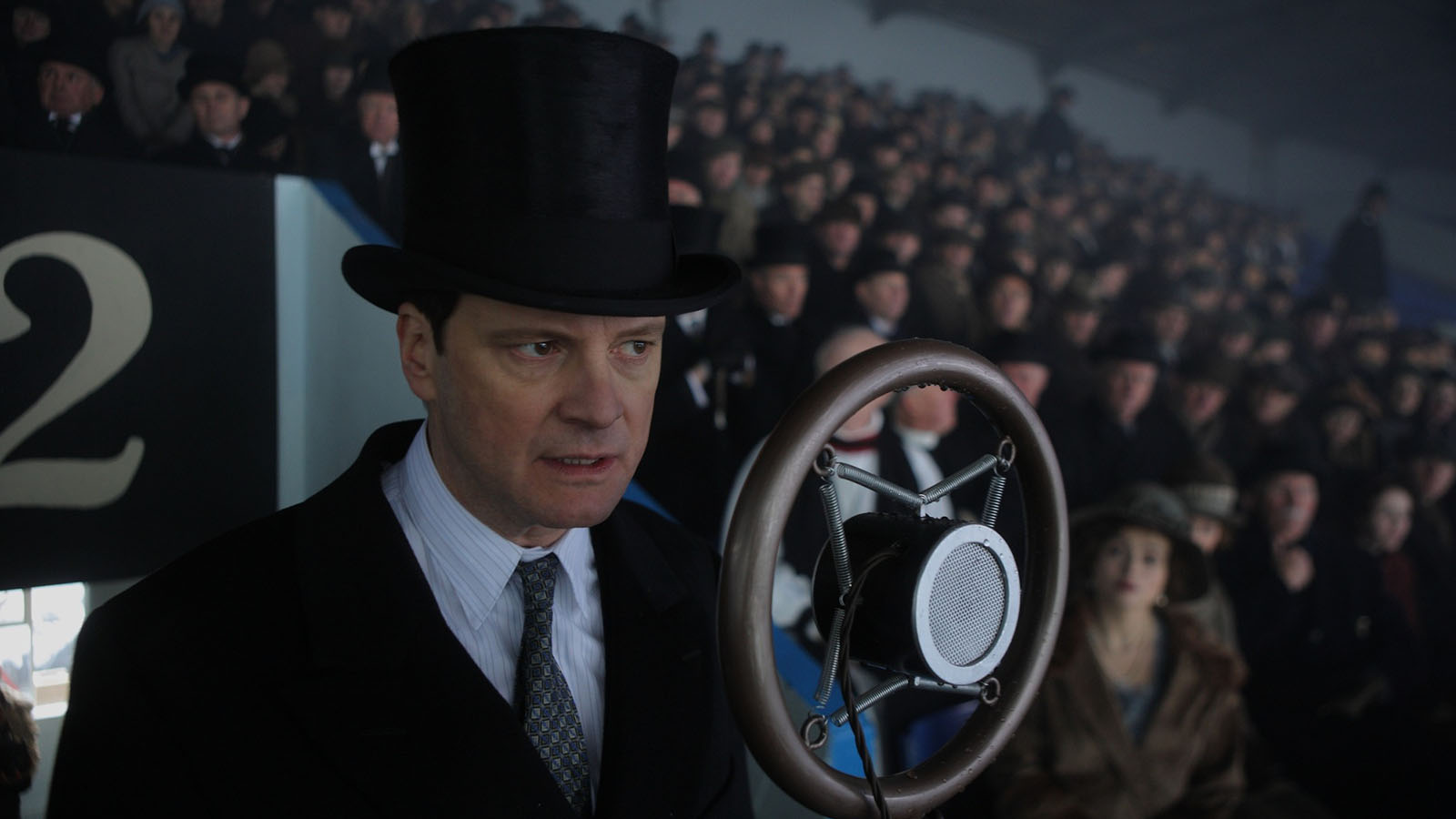
This is a complete list of films screened publicly at Bryn Mawr Film Institute in 2011. See the comments for select exclusive programs that are not listed on Letterboxd.

This is a complete list of films screened publicly at Bryn Mawr Film Institute in 2010. See the comments for select exclusive programs that are not listed on Letterboxd.
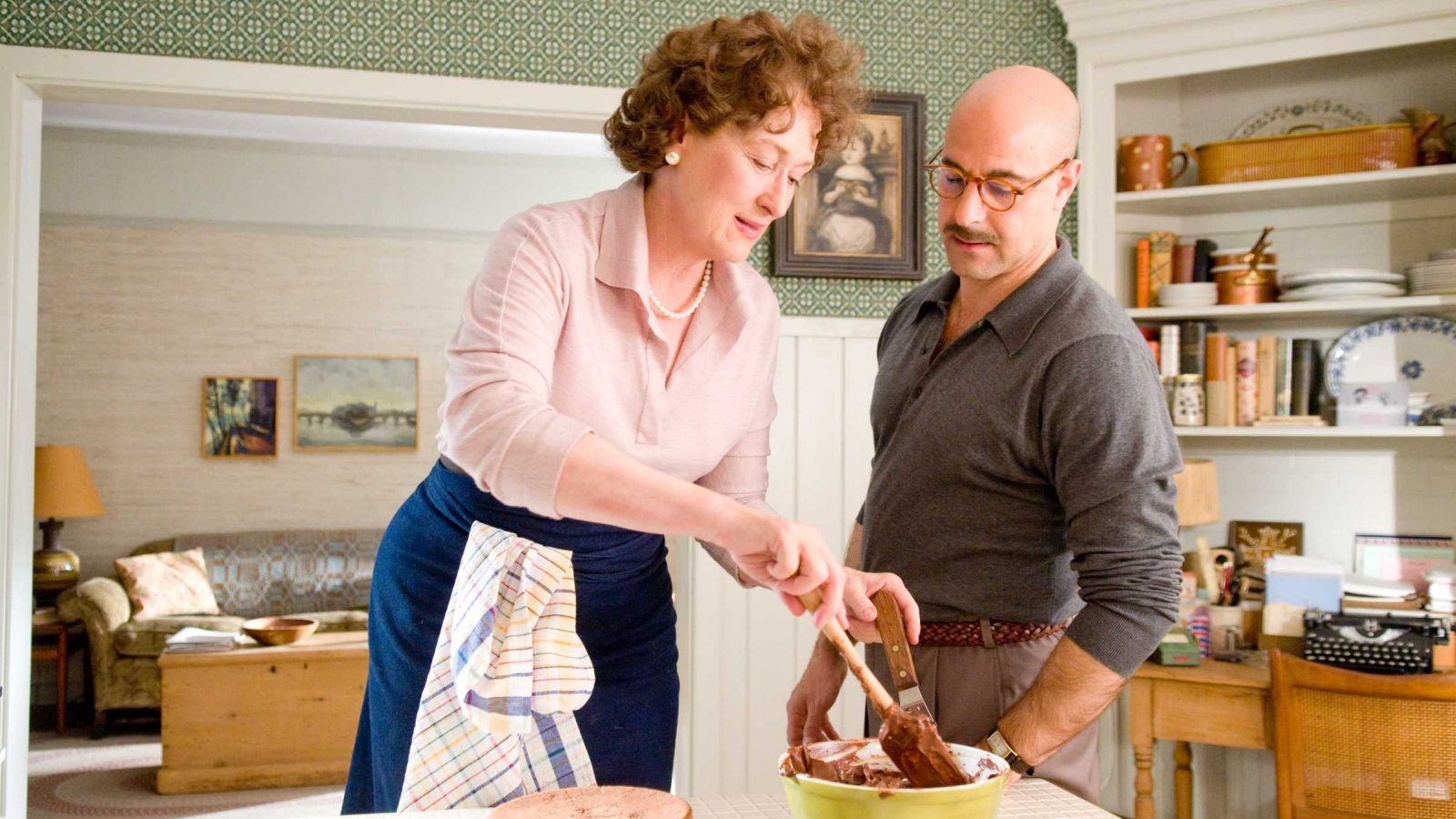
This is a complete list of films screened publicly at Bryn Mawr Film Institute in 2009. See the comments for select exclusive programs that are not listed on Letterboxd.
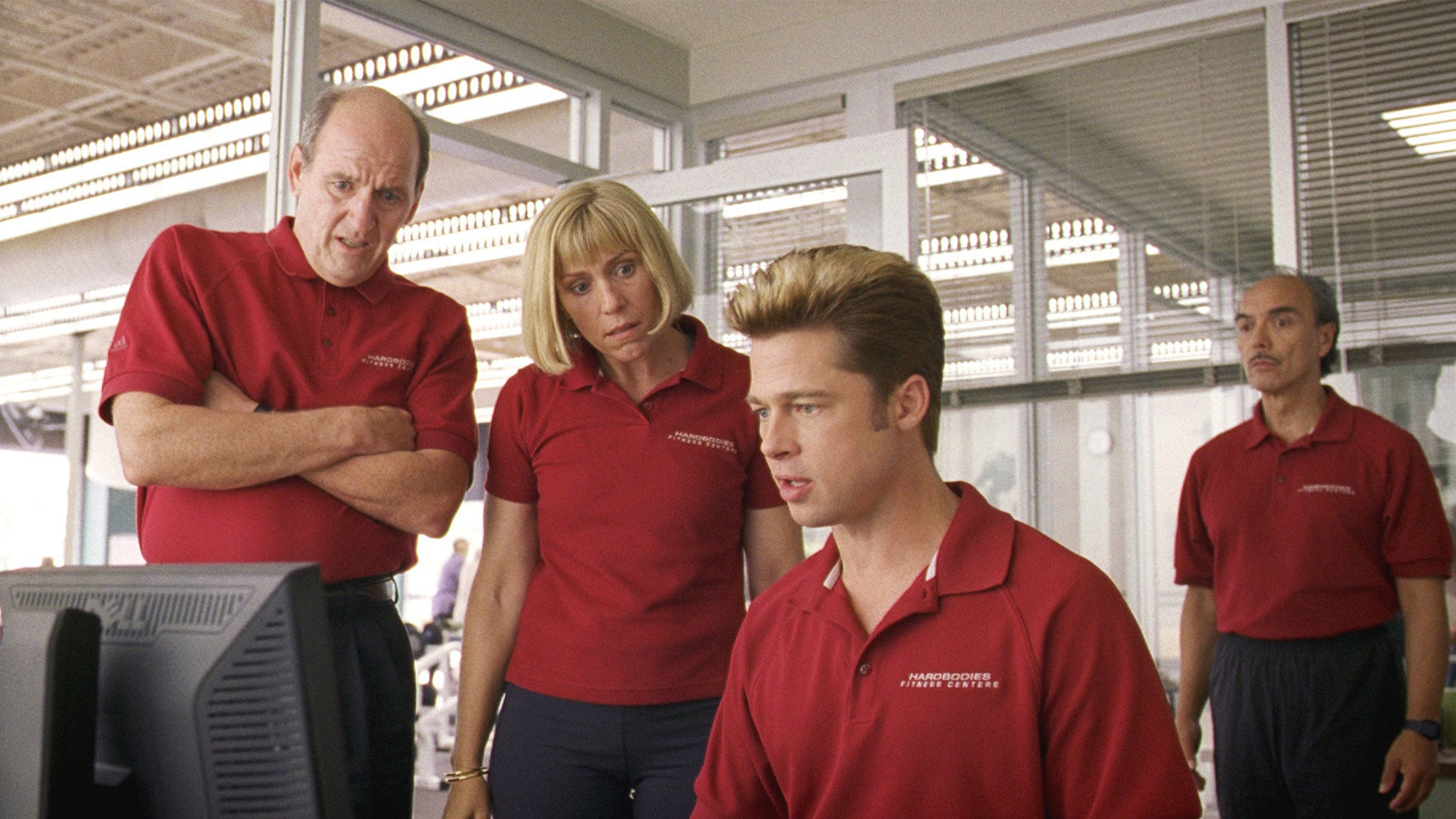
This is a complete list of films screened publicly at Bryn Mawr Film Institute in 2008. See the comments for select exclusive programs that are not listed on Letterboxd.
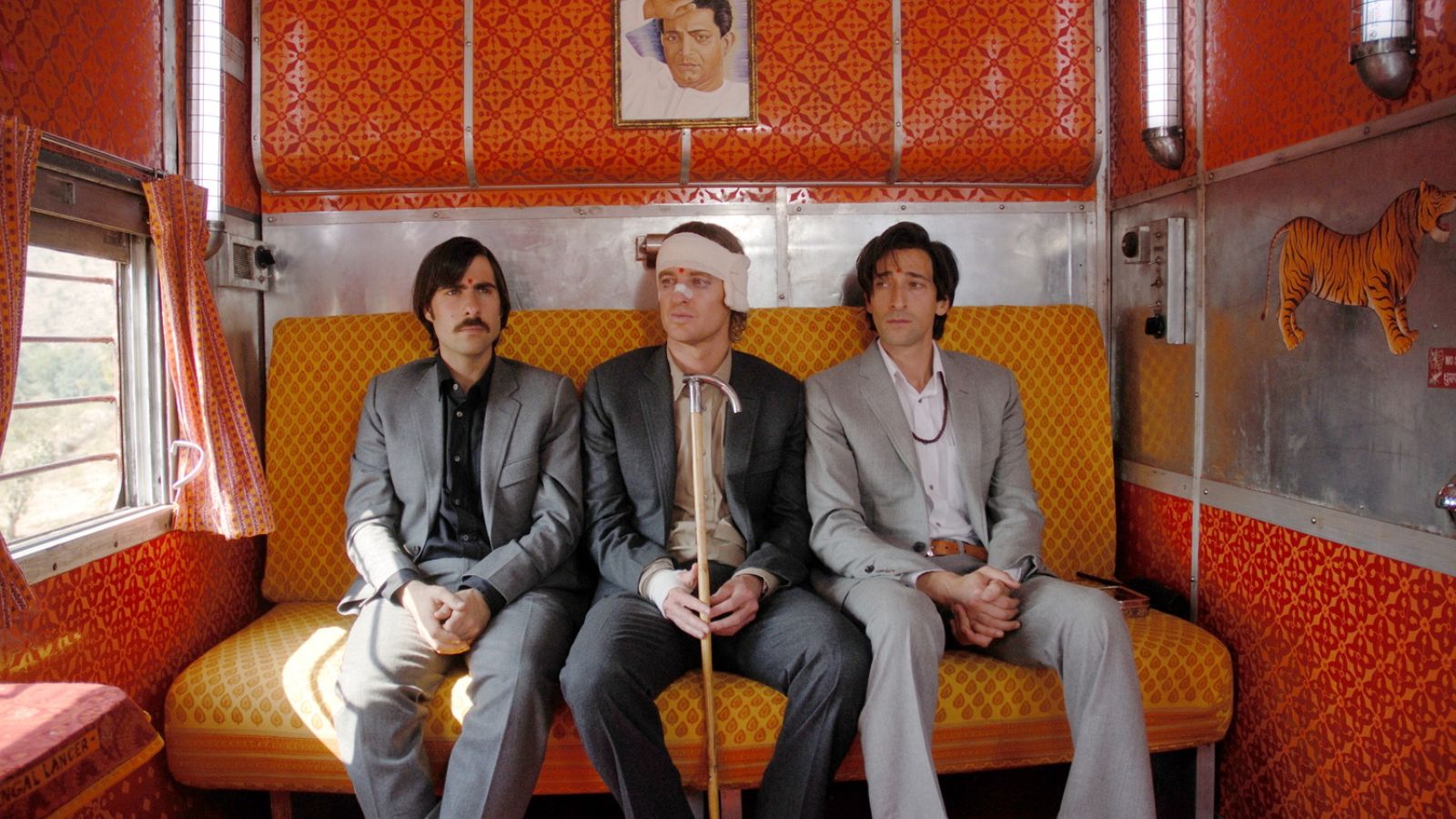
This is a complete list of films screened publicly at Bryn Mawr Film Institute in 2007. See the comments for select exclusive programs that are not listed on Letterboxd.

This is a complete list of films screened publicly at Bryn Mawr Film Institute in 2006. See the comments for select exclusive programs that are not listed on Letterboxd.
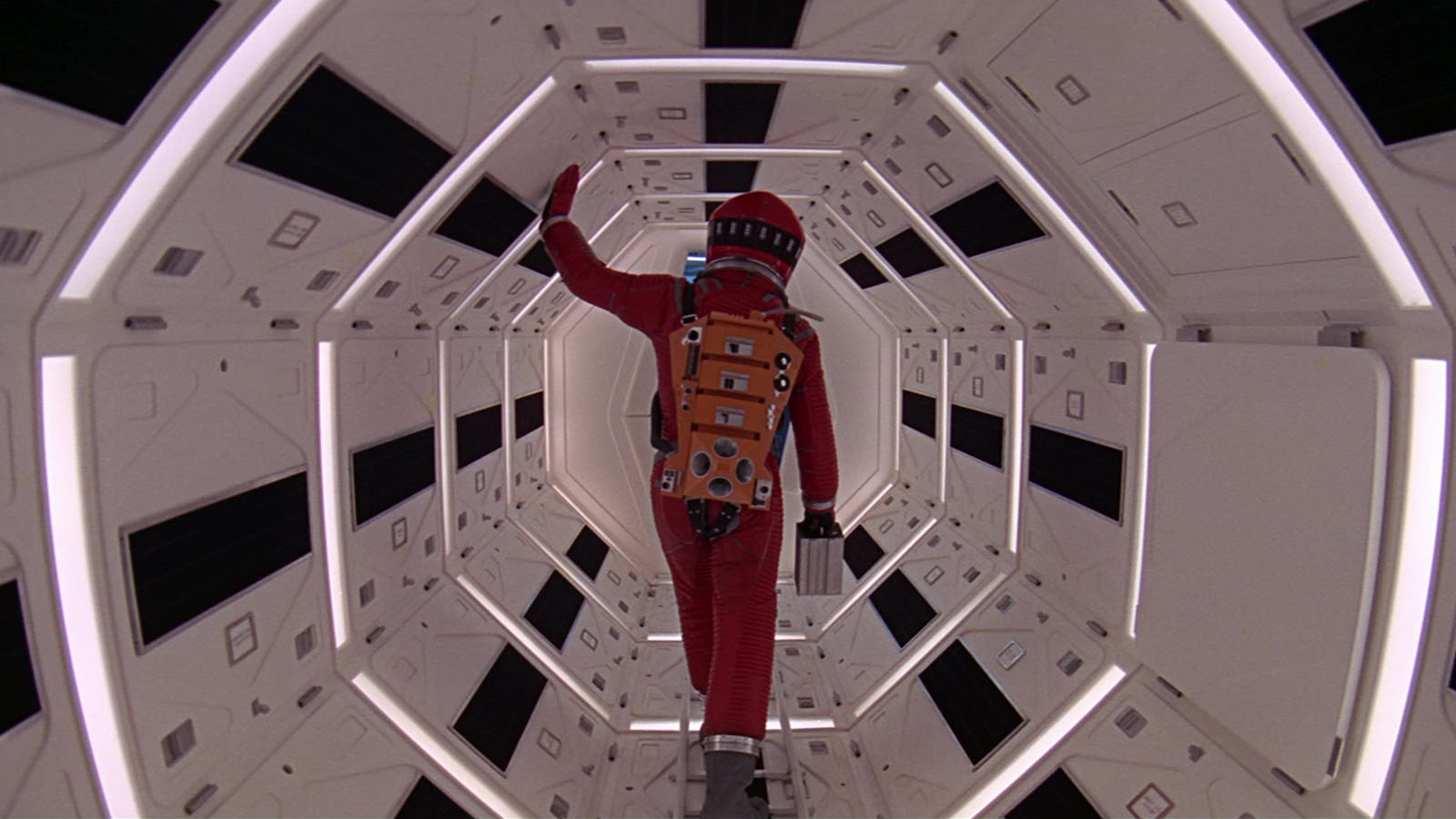
This is a list of the films that played at BMFI in 2005. See the comments for select exclusive programs that are not listed on Letterboxd.
